The title of Governor of Plymouth and St Nicholas Isle seems to confirm they were regarded as two separate entities in terms of ownership, the Island not being part of Plymouth when it was incorporated in 1440. The Governor was a Crown Appointment and was a military not civilian appointment for the military command of Plymouth Fortress, prior to the Citadel being built this was Drake’s Fort – which was incorporated into the Citadel when it was built – and St Nicholas Island. As Plymouth, which administered its own affairs through its Corporation and had done so since 1440 and was run relatively independently of the Crown it is unlikely the Crown would relinquish its military appointments and its power of coercion by allowing the town to appoint its own military governor. Whilst it is true that Plymouth petitioned the Crown for Sir Francis Drake to be appointed Captain of the Isle of St Nicholas as the Island was known back in Tudor times and until the 1800’s there is no record of him ever being appointed and he was not as some claim ever appointed Governor of Plymouth and St Nicholas Isle. It’s also worth noting that there was some discord between the Corporation of Plymouth and the Crown. Drake, from a relatively poor family and whose wealth relied on the patronage of Elizabeth I would be unlikely to want to be a pawn in the power struggle and was probably relieved not to be appointed. Drake was tasked with improving the defences of the forts at one point but the first Governor was appointed in 1596. Although one of the Barracks on the Island is known as the Governors House it was never known as that by the Military and it was only complete for a few years until the post was abolished, the Elizabethan fort at the top of the Island was the main building whilst there was a Governor and the plans do not show any Governors residence. In reality as the Governor of Plymouth and St Nicholas Island he resided in the Citadel and later the Government House (later Admiralty House) in Mount Wise from 1793 if he was in Plymouth. The Governor would usually appoint one of his deputies as Captain of St Nicholas Island but again the deputy would not necessarily live on the Island unless it was manned for war. In later years as the post became more of a reward and sinecure for senior military figures on the retired list few spent much time at all in Plymouth let alone on the Island. The post of Governor of Plymouth and St Nicholas Isle lasted until 1842 when the post was abolished and the Lieutenant Governor who was by default the General Officer Commanding Western District until 1903 and subsequently the Officer Commanding Plymouth Garrison held the responsibility for military command until the Officer Commanding Plymouth Garrison post was abolished sometime after World War II as the military numbers fell.
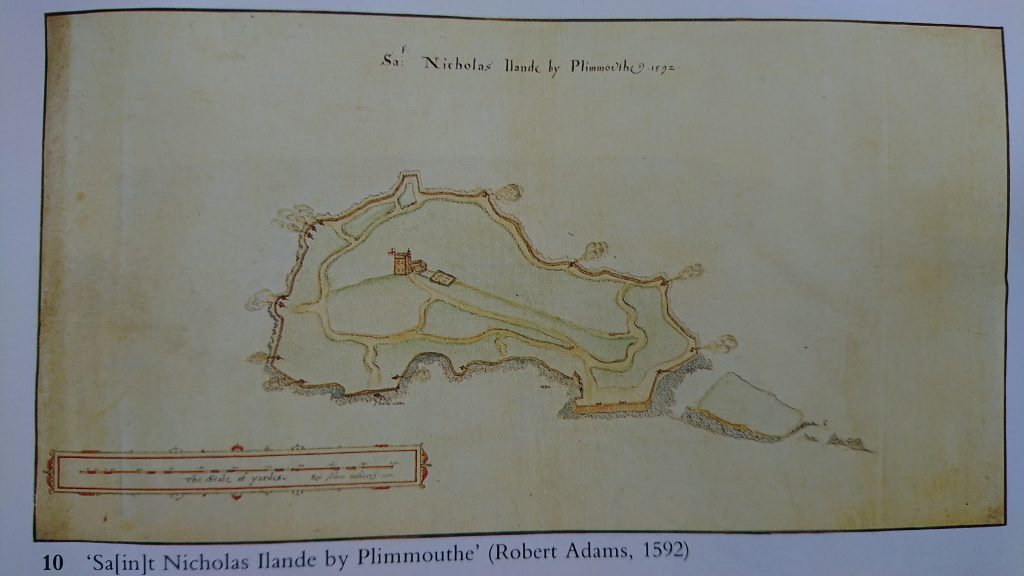
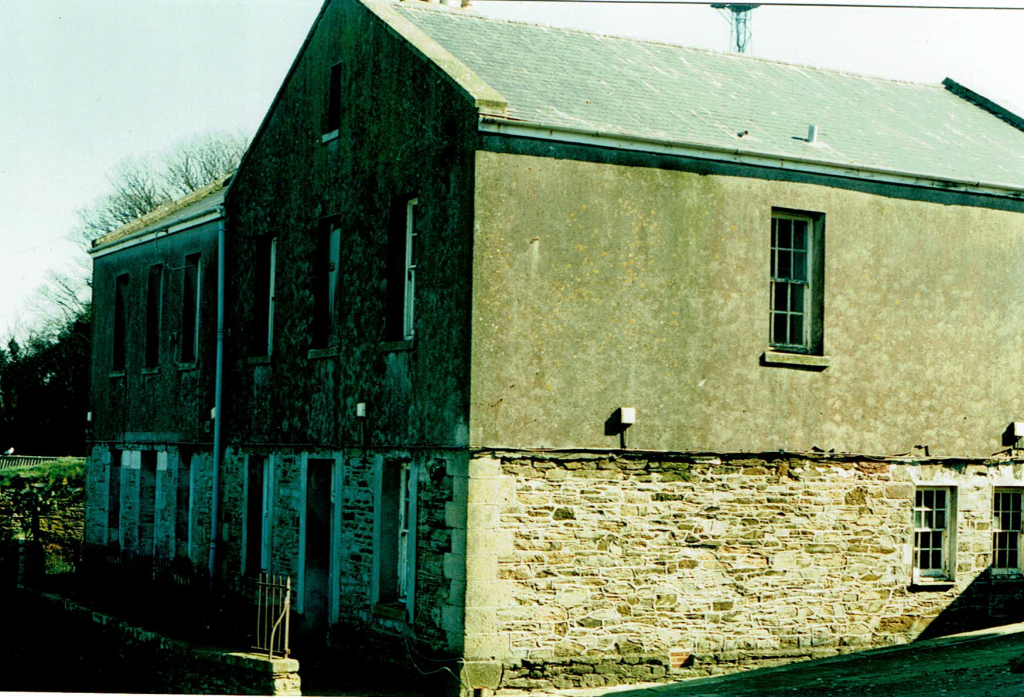
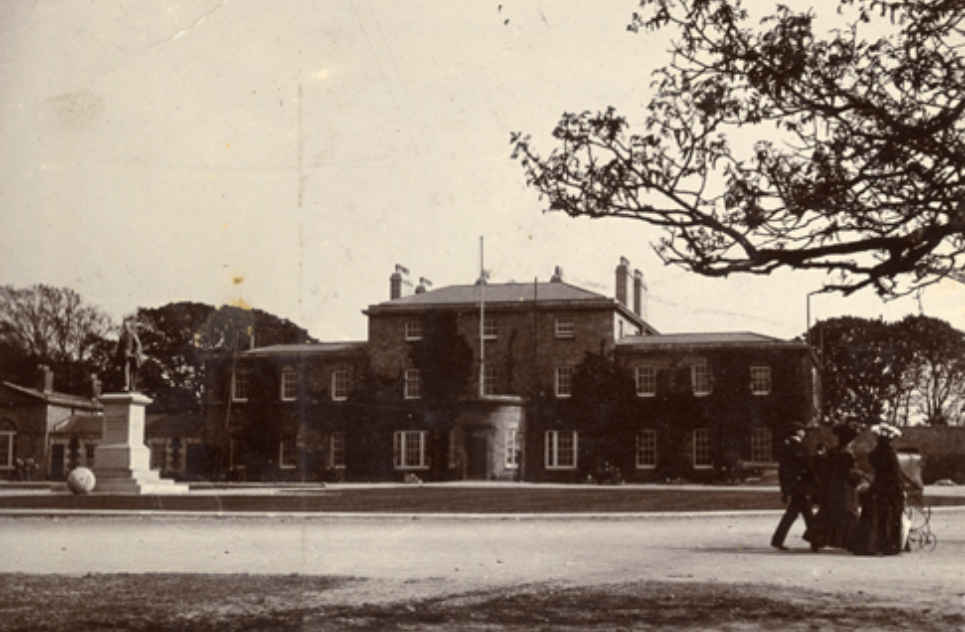
The early Governors were certainly the busiest, Gorges the first Governor and his involvement with the colonisation of New England in the Americas and the Pilgrim Fathers. The English Civil War was the only time the Governor saw active service in Plymouth and after that it became something of a Political appointment to secure Plymouth for the Protestant succession after the restoration of the Monarchy and Charles II until it was secured with the Glorious Revolution and William II and Mary II ascended the throne in 1688. After that it gradually became less political and more a reward for retired or very senior military commanders who were retired from active duty. The following are the list of Governors with some brief details about their time in post.
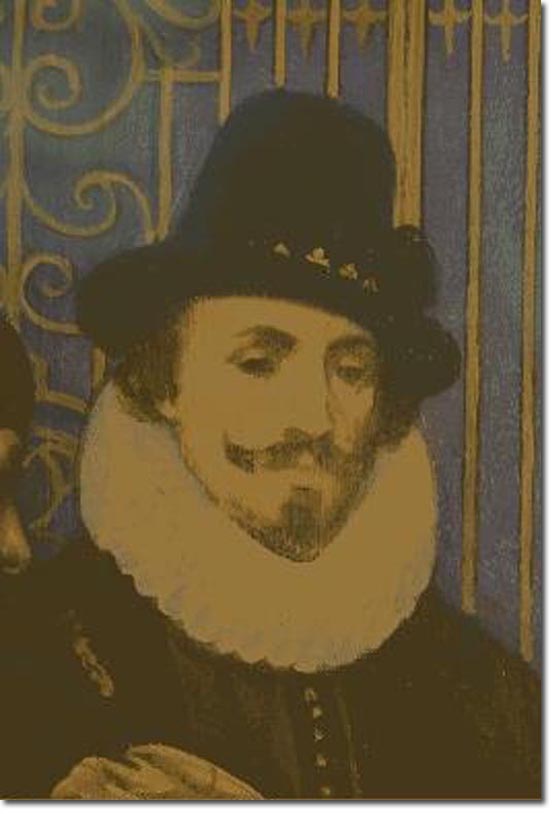
Sir Ferdinando Gorges 1596-1601 and 1603-1629
Despite the name Ferdinando was very much an Englishman whose family came over to England with the Norman Invasion. He was appointed as a reward for a successful military career and his first tenure saw the raising of the alarm when the Spanish Armada was sighted and the completion of the Tudor forts both on the Hoe (Drake’s Fort) and on St Nicholas Island under Federico Genebelli the Queen’s Engineer. Gorges was removed as Governor as he was implicated in the rebellion of the Earl of Essex. However this appears to have been more by association with Essex who was an early Patron of Gorges as opposed to any direct involvement. Gorges testified against Essex at the trial and was subsequently restored to the Governorship. His second tenure saw his involvement with the colonisation of America as a major shareholder of the Plymouth Company. His earliest venture, the Popham Colony in 1607 failed but he was one of the signatories on the land patent for the Pilgrim Fathers in 1621 and held the land patent for the Province of Maine which later was divided and eventually became the State of Maine and the State of New Hampshire. Gorges left Office in 1629 and died in 1647 after the failure of his American ventures. Coincidentally Gorge’s brother Tristan was the second in command of Drake’s final voyage. Drake having died was buried at sea in full armour and in a lead lined coffin near Potobelo Harbour in Panama on the Pacific coast of Central America. Tristan named the nearest Drake’s Island in his honour and it was the original Drakes Island and is still called Drakes Island today
Sir Nicholas Parker 1602-1603
When Ferdinando Gorges was removed from the Governorship Sir Nicholas was already the Governor of Pendennis Castle in Cornwall. It appears he held both posts simultaneously and was initially a quickly available replacement for Sir Ferdinando. The issue resolved itself when Gorges testified at the trial of Essex and was reappointed a year or so later.
Sir James Bagge 1629-1638
Sir James Bagge was the son of a local merchant and has gained an unsavoury reputation as a bully and a tyrant as well as a corrupt businessman. This stems mainly from his dealings in supplying the Royal Navy in Plymouth. He was a consummate political operator and managed to ingratiate himself with the King and his Privy Council, including the Duke of Buckingham. He did this through a facility for hard work and by using his own money to ensure he could carry out his duties without waiting for authorisation. Although Bagge’s main motivation was self advancement his reputation may be a little unfair as his actions did benefit the Navy and to an extent Plymouth whilst his enemies, and he made many because of his tyrannical nature, seem to have exaggerated the charges bought against him which were generally dismissed. Bagge died in office.
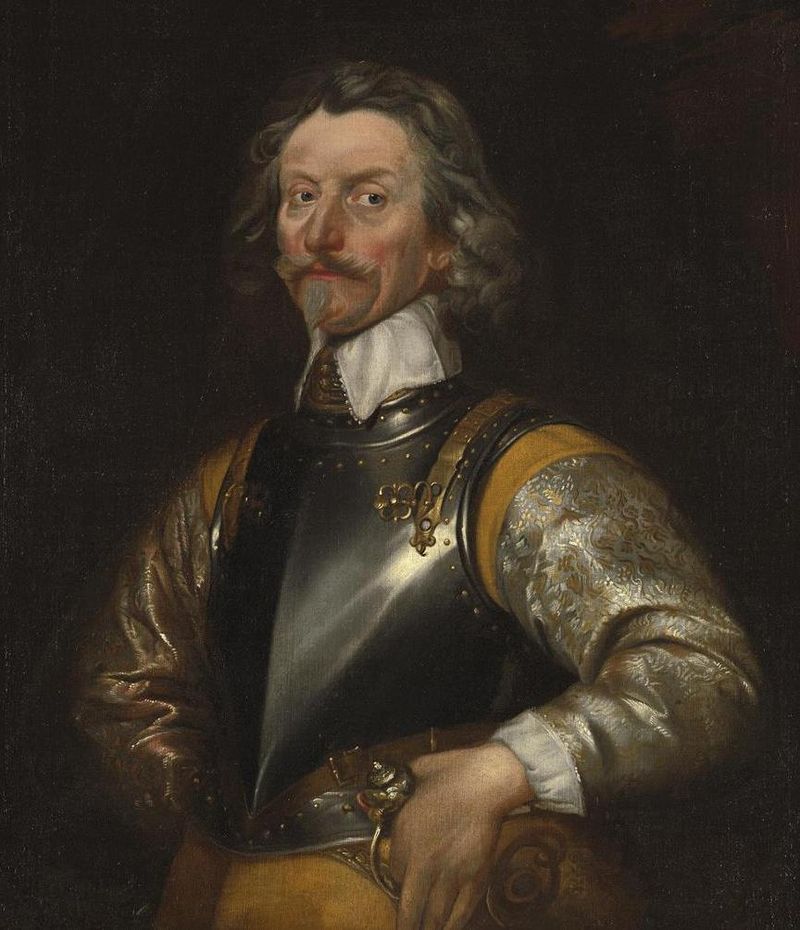
Sir Jacob Astley 1638-1643
Sir Jacob made his name serving abroad in various military expeditions from the age of 19 including for foreign commands notably the Dutch and Danish. Having established his military reputation and returned to England he was appointed Governor in 1638. However as one of the foremost infantry commanders he was frequently away from Plymouth on councils planning for campaigns or putting down rebellions and commanding forces for King Charles I mainly in the North and Scotland. On the outbreak of the English Civil War Astley immediately sided with the Royalists and joined Charles I in Nottingham to take up the position of Major-General of Foot, effectively commanding the Royalist Infantry, This left Plymouth in the hands of the Parliamentarians and the Town declared for the Parliamentary or Puritan cause. 1642 saw the effective end of his Governorship as Plymouth held out during a four year Royalist siege before being relieved by Parliamentary forces.
Sir William Ruthven 1643
Sir William was a Scottish Parliamentarian appointed to the Governorship it seems partly because of his command of a band of Scottish Mercenaries that would bolster his authority, the Scots had been at odds with Charles I for a number of years leading up to the civil war and they were found throughout England fighting for the Parliamentary cause. It seems Ruthven left Plymouth in 1643 to take up the appointment of Lieutenant General before being given command of the Parliamentary forces in the South West. During his Governorship Sir Alexander Carew was appointed Captain of St Nicholas Island. In 1643 it was thought that Sir Alexander was in negotiations with Prince Rupert at Mount Edgecumbe to surrender the Island to Royalist forces. The exact circumstances in which the plot was discovered are unclear but Carew was arrested, taken to London and found guilty of Treason by Parliament. He was sentenced to death and a year later the sentence was carried out on Tower Hill.
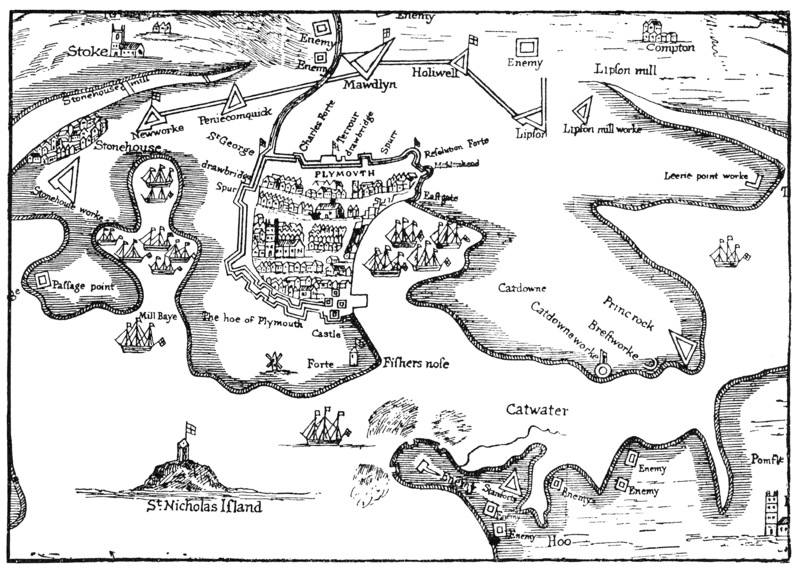
Colonel James Wardlaw
Colonel Wardlaw arrived as part of the reinforcement for Plymouth by sea in 1643 to replace Sir William Ruthven as Governor. He arrived with Colonel William Gould as his second in command, the 600 men of Gould’s Regiment of Foot, arms, ammunition, 200 barrels of Powder and £4000. Wardlaw, a Professional Soldier was constantly at odds with Mayor Cawse and it was Wardlaw who put the Castle and Fort, Magazine and St Nicholas Island under military control distrusting the Civilian led locally raised trained bands. He was relieved after a period of hard fighting due to differences with other Commanders.
Colonel William Gould 1644
Colonel Gould was a local Devon man who had raised his own Regiment of Foot. He arrived with his Regiment by sea in 1643 with Colonel James Wardlaw and took over as Military Governor of Plymouth in January of 1644 but died in March due to illness.
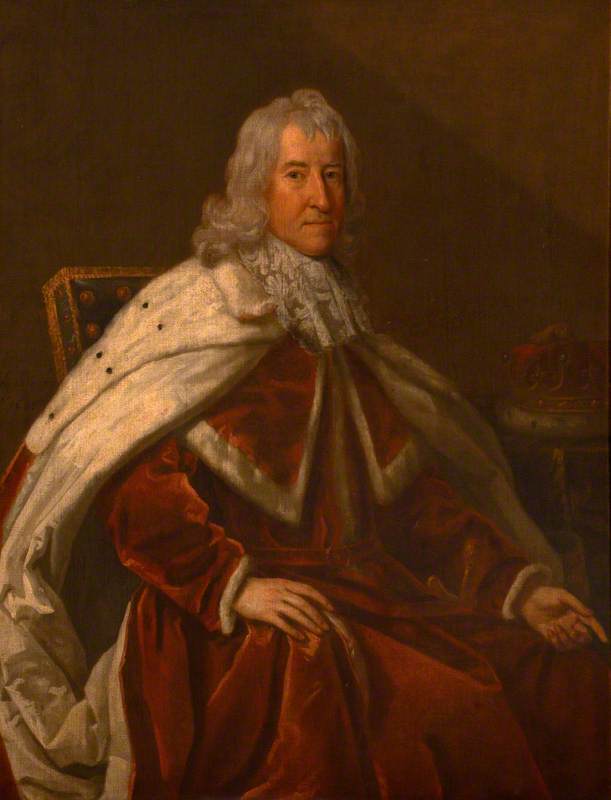
Baron John Robartes 1645
A Cornish man born in Truro into a wealthy merchant family John Robartes fought on the Parliamentary side not because of Puritan beliefs but because he felt the King had been misled by evil councillors. He arrived in Plymouth in 1644 and marched into Cornwall with the Earl of Essex but was defeated by Royalist forces in September. On finally returning to Plymouth he filled of Military Governor. Under Cromwell’s reforms for the New Model Army he lost his military command and along with it the post of Governor in April 1645 although a petition was sent to Parliament to retain Robartes as Governor.
Colonel James Kerr 1645
Colonel Kerr, another Parliamentary soldier was appointed to replace Baron Robartes in July after the failed petition to have Robartes continue as Governor. Kerr is mentioned in Parliamentary records as having refused a demand and bribe from the Royalist Colonel Digby to surrender Plymouth during December shortly before being replaced by Colonel Ralph Weldon.
Colonel Ralph Weldon 1645-1649
Ralph Weldon was born in Kent but was a commander in the Parliamentary Army based at Taunton in 1645. He gave up his command on appointment to the post of Governor of Plymouth in December 1645 although he did not arrive in Plymouth to take up post until March or April 1646. By this time Plymouth was so short of funds Weldon paid the Garrison out of his own funds to prevent a possible mutiny. He was certainly still the Governor in 1648 but it is unclear after that when he left his post. He held appointments in his native Kent from 1649 but there is no record of him having been replaced or relinquishing the post although equally there is no evidence of a Governor in state papers until 1656.
1656 Major Thomas Saunders
Major Saunders is the only name mentioned until John Desborough in 1659. It is quite possible he held the post until 1659.
Colonel John Desborough
John Desborough was related by marriage to Oliver Cromwell, the Lord Protector having married his sister Jane Cromwell. A staunch Republican he fought on the Parliamentary side and had a number of senior posts under Cromwell. He did not support the claims of Cromwell’s nominated successor, his nephew Richard on the death of Oliver Cromwell instead preferring rule by Army Council. He was briefly appointed Governor of Plymouth but removed shortly after by Parliament. Things were moving quickly and an Army Council removed the Parliament but found itself without authority and even his regiment rebelled. The returning Parliament dismissed him. As this was happening General Monck was marching south from Scotland to oversee the negotiations for the restoration of the Monarchy and put Charles II back on the throne.
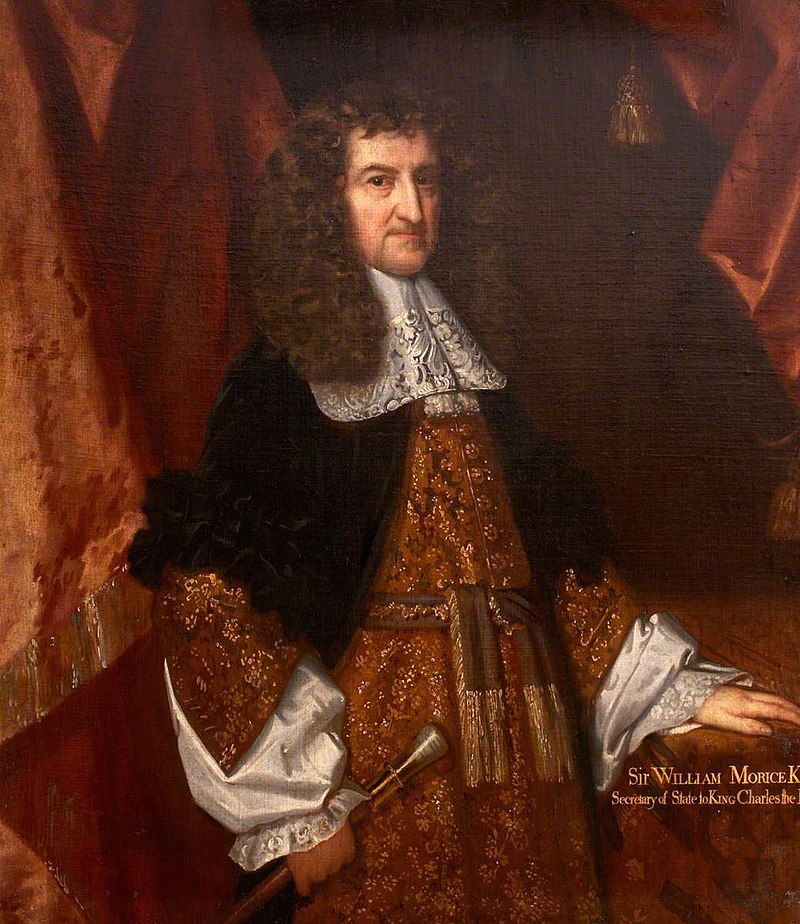
Sir William Morice 1660-1661
Morice was related to General Monck whom he assisted during the restoration of the Monarchy in 1660. Sir William was appointed at Moncks request to ensure Plymouth didn’t rebel during the return of Charles II. It had been a Parliamentary hotbed and was the only Parliamentary town to withstand 4 years of Royalist siege during the Civil War.
John Granville, 1st Earl of Bath 1661-1696
John Granville was a Royalist who had fought for Charles I with his own regiment, raised by his father. A distant relative of General Monck he assisted with the restoration of Charles II. He held a number of posts and commands in addition to the Governor of Plymouth and St Nicholas Isle. As Governor he would have been responsible for the Island during its time as a State Prison. No prison was built, the existing basements and cells of the Elizabethan Barracks and Fort were used as there were few prisoners. In fact only 12 prisoners and only 9 at any one time were held there but all were of national or local importance. Colonel Robert Lilburne, one of the 59 regicides who signed the death warrant of Charles I was the first to be imprisoned and died of natural causes in 1665, Abraham Cheare, a Baptist non-conformist minister also died of natural causes in 1668 after 3 years imprisonment on the Island, Major General John Lambert, the last commander of a Parliamentary Army was imprisoned on the Island in 1667 and died there of natural causes in 1684 after which the prison closed. 9 others were released after short periods of incarceration, John Harrington a Republican writer was imprisoned for a few months in 1662 but released on grounds of ill health. The remainder were local non-conformist ministers who had supported the Parliamentary side during the civil war and were still preaching against the new common prayer book. All were released on bond paid for by their congregations on condition they remained 20 miles outside of Plymouth and did not preach. Granville also supported the accession of James II, Charles II brother who was also James VII of Scotland. He also declared for William and Mary during the Glorious Revolution that secured a Protestant succession on the death of James II in 1688.
Major General Charles Trelawny 1696-1722
Charles Trelawny was a professional Cornish soldier who learnt his trade fighting on the continent. By the time he was appointed it seems various appointments including the important Governorships around the country (Plymouth was a significant trading and military port) became more politically based. The Tory party made substantial gains in the 1695 election and this seems to be the driving force behind removing John Granville whose family supported the Whig Party. George I who succeeded to the Throne in 1714 was fiercely anti Tory and retained Trelawny as Governor.
Lieutenant General John Churchill 1722-1745
A professional soldier of no particular note.
John Murray 2nd Earl of Dunmore 1745-1752
Another professional soldier who it seems received the appointment as a reward for his services abroad.
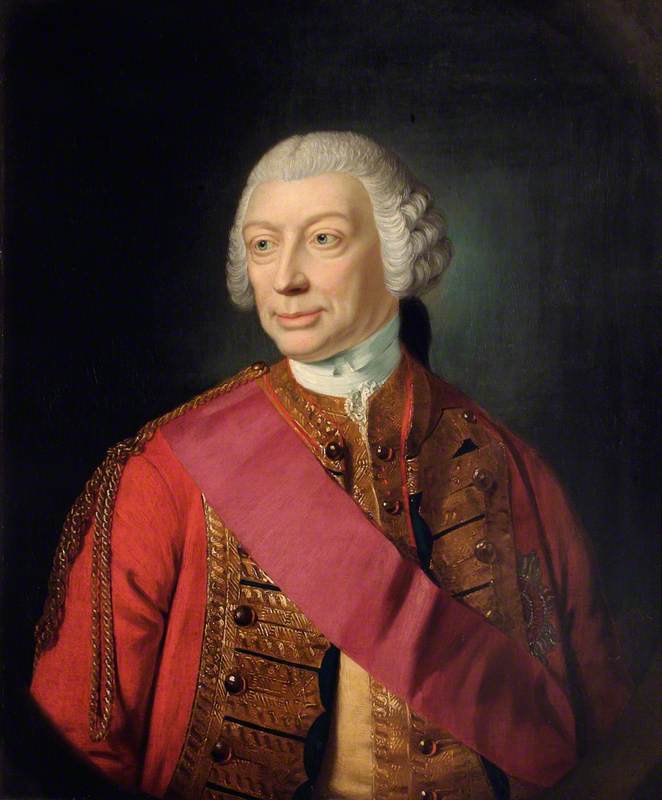
Field Marshal John Ligonier, 1st Viscount Ligonier 1752-1759
Notable as the only French Governor of Plymouth and St Nicholas Isle. His family were Huguenot and came to England to escape the persecution of the protestants when John was 9 or 10 years old. He joined the Army as an officer in 1702 and served with distinction at both home and abroad rising to become Commander in Chief by 1759. He was away from Plymouth for the majority of the time on military business.
Lieutenant General Richard Onslow 1759-1760
Appointed as both Commander Western District and Governor of Plymouth and St Nicholas Isle he died in office after less than a year of a stroke whilst presiding over two court martials of senior officers.
John Waldegrave, 3rd Earl Waldegrave 1760-1784
A professional soldier and politician. Plymouth would have been a busy point of departure for military expeditions to India, the Caribbean and Americas including the American War of Independence during his tenure. He died in office.
Lord John Lennox 1784-1805
A professional soldier and later politician who died in office. Another period of intense activity for the military with Great Britain being at war for the majority of the time including the start of the wars against France that followed the French Revolution but also included conflicts in India, the Caribbean, Americas and Mediterranean. It seems the appointment had become something of sinecure for life and Lord Lennox died in office as had his two predecessors.
John Pitt 2nd Earl of Chatham 1805-1807
A soldier and politician he was appointed at a time where invasion by Napoleon was seen as a real threat and his appointment coincided with his responsibility to prepare defences at potential landing points along the south coast.
Gerald Lake, 1st Viscount Lake 1807-1808
A politician and soldier he died shortly after taking up office.
William Howe, 5th Viscount Howe 1808-1814
Another Soldier Politician. His time in office was equally as intense as his predecessors and like many recent Governors he also died in office.
Charles Lennox, 4th Duke of Richmond 1814-1819
A Scottish Soldier Politician who held the post alongside others including Governor General of Canada. He fought alongside Wellington in the Napoleonic Wars. A keen cricketer he guaranteed Thomas Lord against any losses his new cricket ground may incur leading to the establishment of Lords Cricket Ground in London. He died in office after being bitten by a fox during an expedition to Canada.

Arthur Wellesley 1st Duke of Wellington 1819-1826
After defeating Napoleon Wellington became increasingly involved with politics as a member of the Tory Party and was the Master General of Ordnance in the Government from 1818. Despite many other duties Wellington seemed to take his duties seriously and spent time inspecting the defences of Plymouth including on the Island. He had resigned all his military appointments including that of Governor by 1828 to become Prime Minister.
William Harcourt, 3rd Earl Harcourt 1826-1830
A professional soldier and for the first time in a while not a politician it was a quiet time as far as Britain being involved in Military campaigns was concerned so Plymouth was operating under normal conditions as a military station and port. Although still busy with large numbers of troops arriving and departing for Empire it was under normal peacetime conditions rather than the additional pressures of wartime. Earl Harcourt died in office.
Rowland Hill, 1st Baron Hill 1830-1842
The last in a long line of Soldiers although as with his predecessor William Harcourt he was not a Politician. His tenure was busy but again under peacetime conditions rather than any major threat of war. Hill died in office and the post of Governor was abolished on his death being absorbed into the duties of the Lieutenant Governor and Commanding Officer Western District who was a serving officer as opposed to a retired officer.

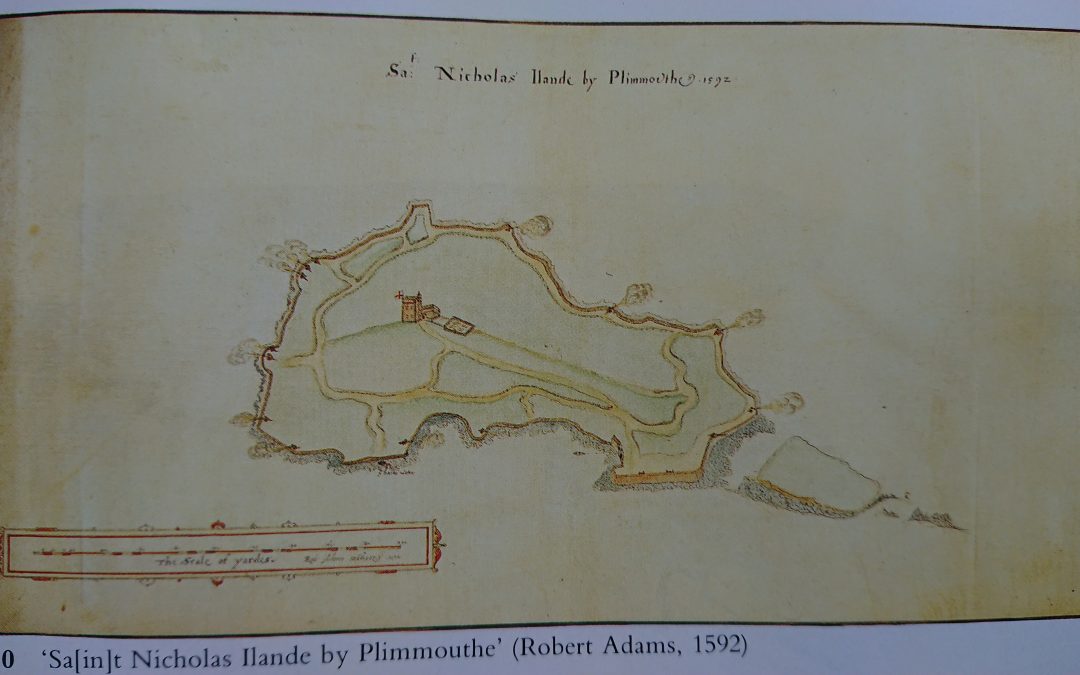


In 1643 Mayor Cawse is mentioned do you have any information on this gentleman. I believe he’s a direct descendant.
Hi Wendy, John Cawse was mayor 1636-7 under Charles I and again in 1643-4 under Cromwell. I’m afraid his name just came up alongside the research I was doing into the Island and I didn’t follow it up any further as it wasn’t relevant to what I was doing. However if you google “Mayor John Cawse Plymouth” in the google books (you can find the link by clicking the 3 dots on the task bar beneath the search box and then clicking on books. Good luck with your research